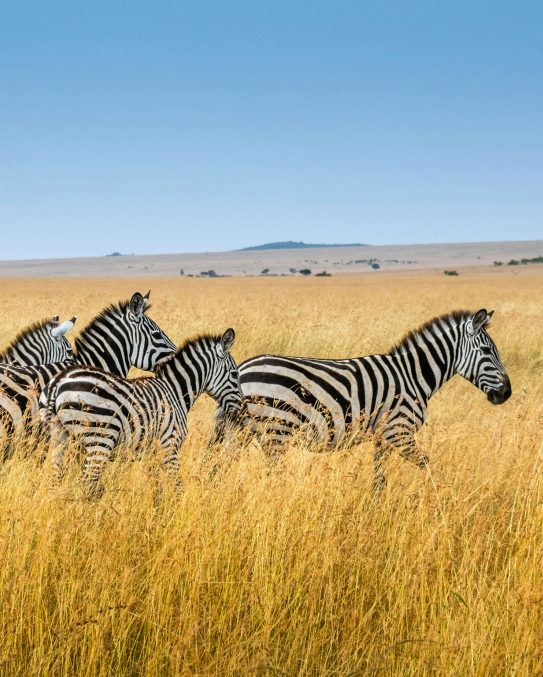Start planning your
Uganda Travel Guide
Uganda Travel Guide: Essential Information
Money & Currency
The currency in Uganda is the Uganda Shilling (UGX). It's recommended to exchange your money upon arrival to easily pay for meals, souvenirs, and drinks during your travels. While US Dollars are widely accepted, it's best to use cash. Traveler’s cheques and credit cards can be used at most lodges and in Kampala, but they come with high transaction fees.
Tipping
Tipping for good service is common in Uganda, typically around 10–15%. Tips are usually given in Uganda Shillings or US Dollars. When going on a gorilla trek, tipping is optional. If you hire a porter, they usually receive the highest tip, with additional tips given to guides, trackers, and security personnel. For specific tipping advice, consult an Africa Safari Expert.
Climate
- Average temperatures: 14°C to 27°C
- Rainy seasons: March to May and September to December
- For gorilla trekking, it's important to check the "best time to visit Uganda" for detailed climate charts and advice
What to Pack
Uganda is warm during the day, so pack lightweight clothing. If trekking gorillas, bring long trousers, long-sleeved shirts, long socks (to protect against ants), gloves, a hat, and a raincoat. Sturdy hiking boots are essential—break them in before your trip to avoid blisters. For the mountain areas, pack warm clothes, a fleece jacket, sunscreen, and insect repellent.
Flights & Getting Around
Flights to Uganda can be booked through Journey Smiles Expeditions. The main international airport is Entebbe International Airport, 35 km from Kampala. While private charters are available, they are expensive. Most travelers use road transfers in minibuses or 4X4 vehicles, especially for safaris. Uganda's road infrastructure can be poor, and travel times between destinations may be long, especially during the rainy season.
Fly safaris offer unparalleled convenience and efficiency for exploring Uganda's breathtaking landscapes and safari destinations. These flights minimise travel times and eliminate the challenges posed by the country's road infrastructure, particularly during the rainy season. With direct access to remote airstrips such as Bwindi, Kidepo, and Murchison Falls, fly safaris allow travelers to focus on enjoying their adventures without long and uncomfortable road journeys. The scenic aerial views during the flights add an unforgettable touch to the safari experience, enhancing the beauty of Uganda's wilderness. By choosing fly safaris, travelers can embrace comfort, ease, and unforgettable experiences in their journey.
Visa & Passport Requirements
All visitors need a visa, and your passport must be valid for at least six months after your departure date. You can obtain a visa at border crossings or at Entebbe International Airport. Single and double-entry visas are valid for up to three months and cost approximately $30. Extensions are available in Kampala.
About Uganda
History & Economy
Uganda has been inhabited for over 50,000 years. Its indigenous people, including the Batwa, were displaced by cattle herders and farmers. The Buganda Kingdom flourished before European colonization. Uganda gained independence in 1962, but it wasn’t until the 1980s, after the turbulent regimes of Milton Obote and Idi Amin, that stability returned. The economy is largely agricultural, with coffee, tea, and tobacco as key exports. Agriculture occupies 75% of the workforce, and tourism is a growing sector. The country also holds valuable mineral, gas, and oil resources.
People & Culture
Uganda has a population of 34 million people, primarily concentrated in the southern and western regions. The Baganda people are the largest ethnic group. English and Swahili are the official languages. Christianity is the dominant religion, but Islam is prominent in the Asian community. Ugandans are generally friendly and polite, valuing traditional greetings and family connections. Visitors should respect local customs, especially in terms of behavior.
Landscape & Wildlife
Uganda's geography is characterized by flat land with mountain ranges and lush landscapes, thanks to its location in the Rift Valley. It has a temperate climate, and 25% of the country is covered by lakes, rivers, and wetlands. Northern Uganda is more arid, but the country is known for its diverse wildlife. Uganda is famous for gorilla trekking in Bwindi Forest, chimpanzee encounters in Kibale Forest, and birdwatching, with over 1,000 recorded species. National parks like Queen Elizabeth and Murchison Falls offer great game viewing, though not as extensive as in Kenya or Tanzania.
Uganda is one of the top birding destinations in the world and offers a rich biodiversity experience.
Visit other East Africa destinations

RWANDA
Known as the "Land of a Thousand Hills," Volcanoes National Park is a top destination for seeing mountain gorillas and golden monkeys up close



